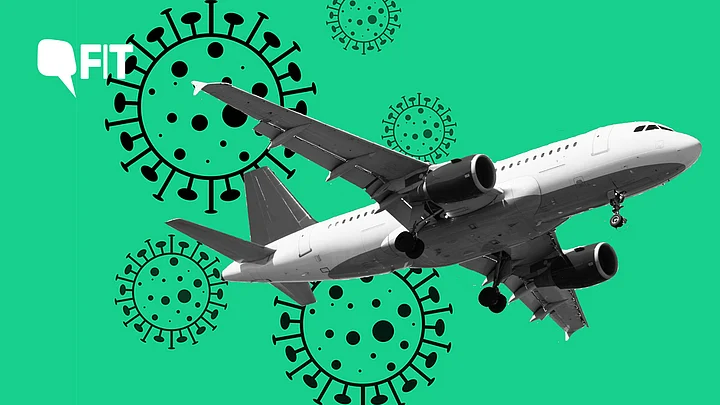Indians will be able to fly again starting May 25, as airlines reset the button on air travel. Hardeep Singh Puri, India's Civil Aviation Minister, indicated that it will be a carefully calibrated exercise, with precaution and safety at every step.
According to guidelines shared by the ministry, these are the steps already in place:
Passengers will have wear masks from the moment they leave home/exit taxi
They will travel only in authorised taxis
They will first be screened by thermal scanners and their temperature will be noted
They have to self-declare that they are not travelling from a containment zone/ have Arogya setu app
Multiple sanitisation points at the airport
As far as possible, there will be minimal contact
Before boarding passengers will be provided a safety kit with three-layered medical mask and sanitiser
But even as bookings open, there is a lurking fear. Can I catch COVID-19 infection from my fellow passenger on a plane? The answer depends upon a series of situations. We'll try and answer them one-by-one:
Should I Travel?
Most experts say the virus is very much present and any air travel at this time should be only for absolutely unavoidable reasons. If you are an elderly person or elderly person with co-morbidities, don’t travel. Don’t travel with children unless absolutely necessary. If you are a young person with significant con-morbidities, don’t travel. If you must, take all precautions. Self-assess your situation.
Once inside a plane, should I use a sanitiser?
You will be provided with a sanitiser as part of your safety kit. Bring some from home just in case. You can also carry wipes. Wipe down the seat handle, the table surface, seat belt. Also wipe the magazine pocket and some people have suggested also wiping the air vent above you. Airlines will also be hauling their cleaning procedures and it is expected they will clean surfaces more frequently.
Keep that sanitiser handy. The dirtiest places in airlines are toilets. Wipe down the faucet, the door handle and when you return to your seat, sanitise your hands again for at least 20 seconds. Don’t be embarrassed. Your safety is essential.
What are my chances of catching an infection from an infected person on the plane?
This is an important and top-of-the-mind concern for everyone. According to a study conducted by researchers from Emory University and the Georgia Institute of Technology, an infectious passenger with influenza or any other droplet-transmitted respiratory infection (coronavirus is also a respiratory infection transmitted through droplets), is not likely to transmit the infection to people more than one row away.
The World Health Organization also defines contact with an infected person as being seated within two rows of one another. (See Figure 1 below)
Now, when the infected person coughs or sneezes, and these droplets fall on you, and if you touch these droplets and then touch your face, you can get infected. You can read about how far these droplets can travel right here.
What if I am not seated next to or in a row closer to the infected person, am I still at risk?
But as humans, we will not be just stuck to our seats (though for short journeys, no harm not getting up at all - take care of your toilet needs before or after). You are likely to get up, go to the toilet, to drink water (bottles will be kept in the galley area), stand up to to take something out of your cabin bag etc. According to the same study, the exposure to the virus - your chances of walking past, brushing against etc, is higher (See figure 2). And if you are a cabin crew member, your chances are that much more (but then again, the minister during the press brief indicated that the crew will be wearing ‘full protective gear’ and no food will be served on the flight - minimal interaction).
Which is the safest seat to book?
The window seat. According to this study those on the window seat are 43% less likely to move around, compared to those sitting on the aisle seat.
How effective are cabin air filters?
Here's what WHO says about catching infectious diseases in an aircraft.
"The quality of aircraft cabin air is carefully controlled. Ventilation rates provide a total change of air 20–30 times per hour. Most modern aircraft have recirculation systems, which recycle up to 50% of cabin air. The recirculated air is usually passed through HEPA (high-efficiency particulate air) filters, of the type used in hospital operating theatres and intensive care units, which trap dust particles, bacteria, fungi and viruses."
This is provided you are not seated right next to an infected person and that person sneezes right at you. Ensure that the mask you are wearing is tightly sealed. Some experts also advise wearing googles or face shields as the virus can travel via eyes.
Do face masks help?
Surgical masks (that will be part of your safety kit) do prevent large droplets from landing on your nose or your mouth. It also stops you from touching your face. If you are infected, chances of you passing on the infection reduces. But masks alone are not the answer, because it doesn’t stop you inhaling droplets.
(At The Quint, we question everything. Play an active role in shaping our journalism by becoming a member today.)
